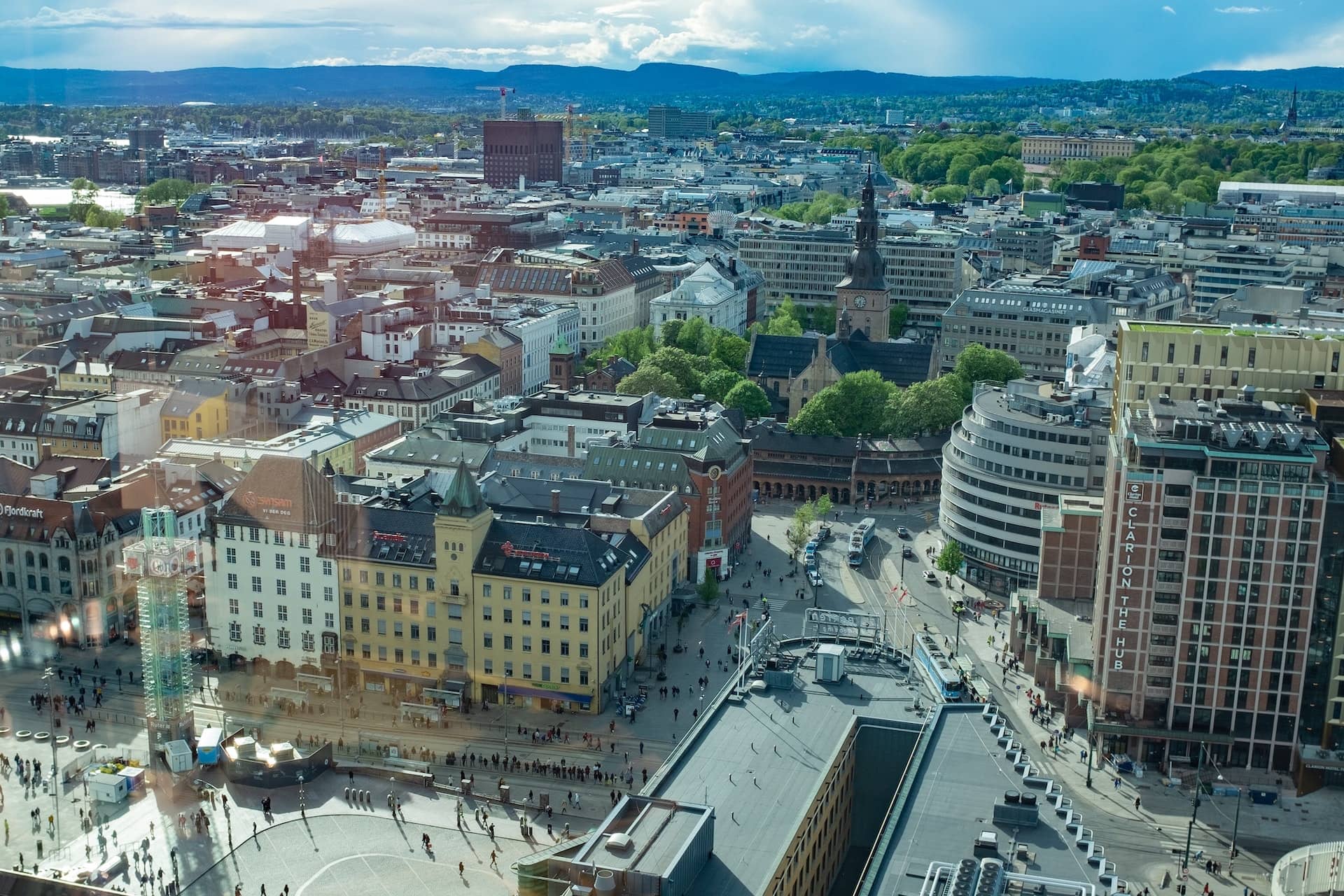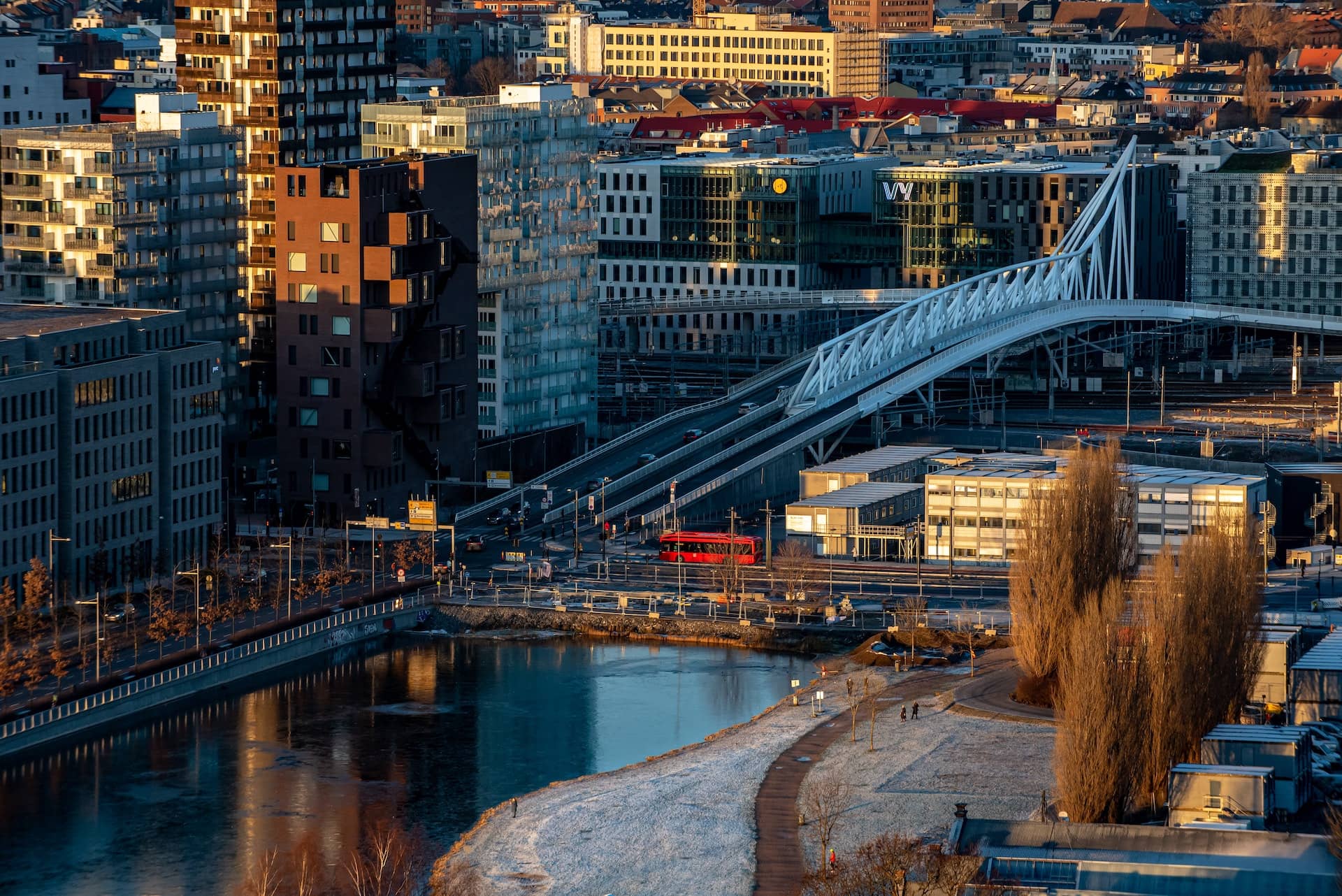Exporting to Norway
Norway, along with Finland and Sweden, is a promising export market for European businesses. Norway’s standard of living is high, the economy is strong, and the local business culture is similar to our own. Transly Translation Agency offers translation, copywriting and editing services to companies looking to enter this market to help your business succeed in Norway.

The Norwegian language
Norwegian has a total of 5 million native speakers. The Norwegian language has two official forms, of which Bokmål is the most widely used.
All Scandinavian languages – Norwegian, Danish, Swedish, Icelandic and Faroese – are descended from Old Norse. Thus, Swedish, Danish and Norwegian are deeply similar, with the latter two – Danish and Norwegian – being especially alike.
The Norwegian language only split from Danish in the course of Norway’s quest for independence in the 19th century. Norwegian is a tonal language – it sounds lyrical. Tonality is a rare phenomenon in the Indo-European languages and is more common to Asian languages, such as Chinese.
Exporting to Norway
Norway is an attractive export market for European businesses, as Norway’s economy is strong and stable, and Norwegians have high purchasing power. The success of Norway’s economy is built on the oil industry, maritime trade and shipbuilding, fishing and fish farming, and timber production and processing. Norway’s economic growth has remained steady for decades. The salaries and standard of living of Norwegians are high, which makes it a sound choice to export products produced in other countries to Norway, where they can potentially be sold at significantly higher prices. To read more about Norwegian economic relations, visit the website of Norway exports.
Norway’s main import goods
Norway’s main imports are machinery and transport equipment, various products, foodstuffs and raw materials, as well as oils and lubricants. For example, Estonia’s main exports to Norway are wooden and modular houses, metal structures, as well as promotional materials and other printed products. This graph depicts the main Norwegian imports.
Entering the Norwegian market: an analysis
Before entering a new market it is always sensible to analyse the environment regarding the product or service you wish to offer. This also holds true when entering the Norwegian market. One way to analyse the macro-environment of an export market is to use DESTEP analysis. While SWOT analysis provides a sound overview of the company and the micro-environment of the export market, DESTEP analysis enables you to obtain a thorough picture of its macro-environment.
Using the DESTEP model for analysing an export market
To use the DESTEP model, write down everything related to exporting your product to the Norwegian market for each factor. Consider the following questions:
The figure shows the DESTEP model.
The demographic factors of the export market
- What is the demographic makeup of the population?
For example, the Norwegian population consists of approximately 5 million Norwegians plus more than 600,000 immigrants, whose numbers are steadily increasing.
- What is the population density and distribution?
Around 80% of the Norwegian population live in cities.
- What are the geographical peculiarities?
Geographic peculiarities include the climate, weather, landscape and ecosystems. The Norwegian climate is similar to ours, except slightly colder. Daylight periods during the winter are short in Norway, while dark periods are long.
Economic factors of the export market
To assess the economic forces in the target market, answer the following questions:
- What characterises the export market?
The Norwegian market is characterised by stability, growth and progressiveness.
- What is the state of the financial performance of the export market?
Norway’s financial performance continues to be stable. In recent years, Norway’s economic growth has constantly remained above 1%. For a country as wealthy as Norway, this is a sure sign of stability. Norway’s financial reserves are extensive, exceeding the country’s GDP.
- What is the outlook for economic climate and growth?
Norway’s economic climate is favourable to innovative products, individualised services and high-quality goods. In the coming years, the market in these sectors is almost certain to grow, and any market turbulence can only be caused by the transition from oil to renewable energy sources.
The social and cultural factors of the export market
To assess the socio-cultural forces in the export market, consider the following questions.
- What are the norms and values of the export market?
The Norwegian market is dominated by European liberal values. The Norwegians respect human rights, treat everyone equally, care about the environment and contribute to communal development as much as possible.
- What are the business culture and communication norms of the export market?
Norwegian business culture is familiar and understandable to most people. Being late for business meetings is considered rude, clothing should be modest and consultative sales yield the best results.
- What is the lifestyle of the people in the target market?
Norwegian society is highly developed. Innovations are encouraged and developed wherever possible, workdays end early, and citizens generally have hobbies, work at self-improvement and travel regularly. The work-life balance is thus important in Norway.
The technological factors of the export market
To assess the technological forces in the export market, consider the following questions.
- What is the level of technological know-how of the export market in the sector in which you are interested?
The Norwegian market is technologically highly developed. Before entering the market, make sure you are up to date with the latest technological innovations in your sector.
- What innovative products are already in use in the export market?
There are many start-ups in Norway, and Norwegians are quick to adopt any innovative solutions. For example, Norwegians are already using robots, electric cars, smart home systems and many other innovative technological products.
- Which technological problems in the export market are yet to be solved?
It is worth considering the technological challenges of your sector, because no new solution to a problem plaguing the Norwegians will go unnoticed.
The environmental factors of the export market
To assess the environmental forces in the export market, consider the following questions.
- What are the mineral resources of the export market?
Norway’s mineral resources include oil and gas. It is, in fact, partly this factor to which Norway owes the strength of its economy. At the same time, however, the Norwegian oil and gas industry is under threat of disruption by the global transition to renewable energy sources.
- What are the primary energy sources of the export market?
Norway’s principal source of energy is water. Hydroelectric power plants generate a significant proportion of the country’s electric power. Norway also generates power from ocean tides.
- Are waste management and recycling important in the export market?
Norway is a world leader in recycling and waste management. In addition to owning the most efficient recycling plant on the planet, Norway is constantly looking for new ways to generate energy from waste.
The political factors of the export market
To assess the political forces in the export market, consider the following questions:
- What is the legal framework in the export market?
Carefully examine the laws and regulations affecting your industry in the export market. You can find Norwegian laws and regulations governing your industry here.
- What is the tax system of the export market?
The Norwegian tax system is similar to that of other European countries. In Norway, VAT is 25% for regular goods and services, 15% for foodstuffs, 8% for cinema tickets, passenger transport and hotel rooms, and 11.11% for raw fish. Income is taxed at 24%, except for people living in Finnmark and Nord-Troms, where the rate is 20.5%.
- What is the current political climate of the export market?
Norway is a monarchy. Executive power is exercised by the Cabinet, which is led by the Prime Minister. Legislative power belongs to both the government and the Storting (Parliament), which is composed of representatives from different political parties. Currently, the social-democratic Labour Party (Arbeiderpartiet) holds the most seats in Parliament.
Translations for entering the Norwegian market
1. Translation of product descriptions from Norwegian and into Norwegian
Our experienced translators can translate your product descriptions from other languages into Norwegian and Norwegian into other languages. All translations are reviewed by a language editor. For specialised texts we can also include an expert in the translation process, if necessary.

2. Translation of technical texts into Norwegian
We also translate technical texts into Norwegian. When translating Norwegian texts, we use translation software to guarantee high-quality translations and offer loyal customers a discount on repeated segments.

3. Translating websites into Norwegian
If you are looking to translate your website into Norwegian, then our team will be pleased to assist. We can help you select which pages should be translated. Following this, we will export the source text, translate it, edit it, coordinate the translation with you and import it back into your website.

What to keep in mind when ordering Norwegian translations
- Norwegian translations involve 3-5 specialists
Your translation job is accepted and prepared by a project manager, translated by a Norwegian-language translator, reviewed by a Norwegian-language editor and, if necessary, also checked by an expert in the respective field. Once the translation is complete, we will perform a final review, after which you will receive the finished translation.
- Personalised service and attractive discounts for loyal customers
Fixed cooperation allows us to consider your terminological preferences and individual translation needs. We also offer loyal customers a personal discount on any repeated segments in the texts. We listen to your feedback so that no errors need to be corrected twice.
- Greater discounts for larger orders
If you have a large number of written materials and documents that need to be translated into Norwegian, send them in for analysis together, even if you are planning to order them over a longer period. This way we can offer you a greater discount.
Read more
ABOUT US, TRANSLY TRANSLATION AGENCY, TRANSLATION SERVICE, EDITING, CONTENT CREATION, FACEBOOK, LINKEDIN
GET A QUOTE.
RECEIVE AN ANSWER WITHIN JUST TWO HOURS!


